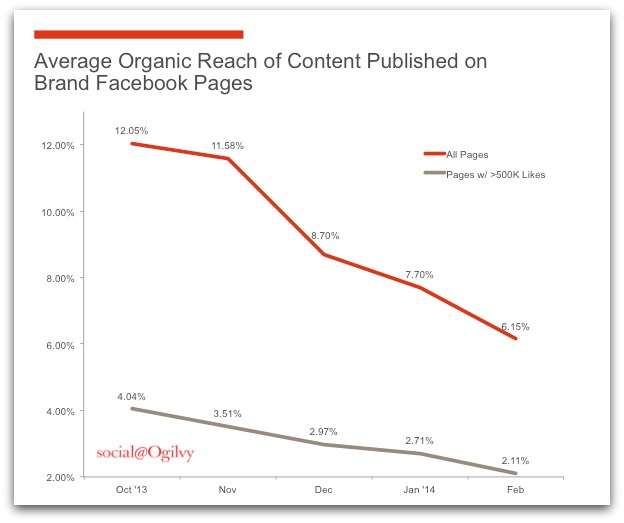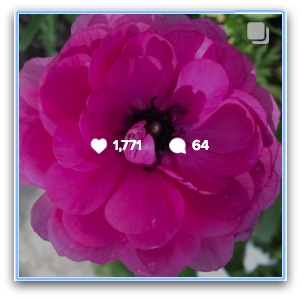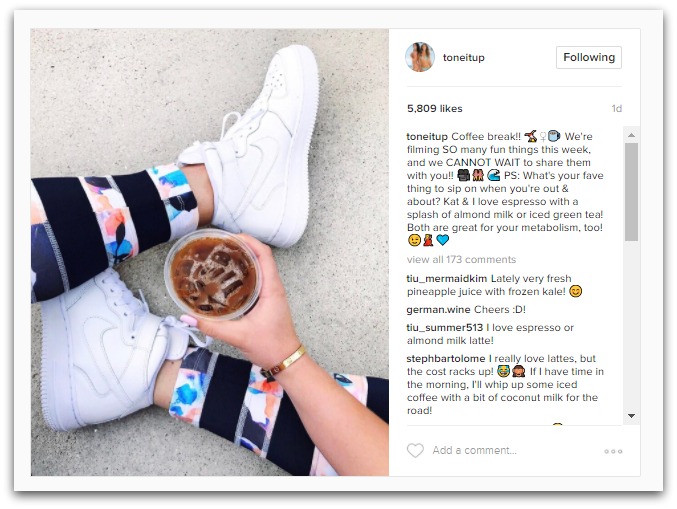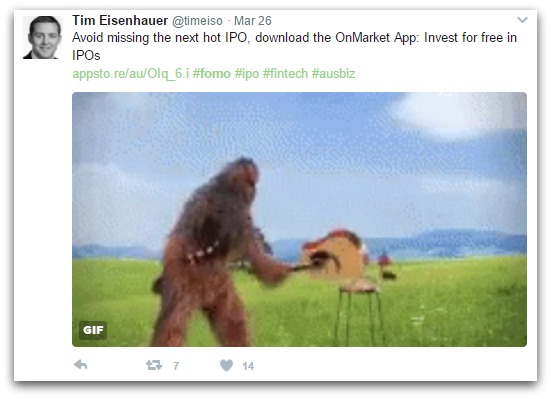You’re frustrated by the lack of engagement your content generates. And you’re convinced you’re the worst at social media.
No matter how hard you try, or how often you post, you can’t seem to rack up more than a handful of likes, comments, or shares despite replicating what influencers currently killing the social media game are doing.
So you keep tweaking small details to gauge what your audience responds to.
But your content’s still getting the cold shoulder.
You’re not even breaking double-digit likes.
And you can count the number of comments you receive on one hand (and two of them are spam bots).
So what gives?
Content Clutter Is Freaking Everywhere (Even For The Big Brands)
On any given day, social media users create or upload:
- 350 million photos to Facebook
- 500 million tweets
- 85 million videos and photos just to Instagram
These stats show no sign of fading in the future, which is bad because organic reach for brands is already steadily declining.
Back in 2012, the organic reach for a Facebook page averaged around 16%.
In 2014, it dropped to a mere 6%.
Brands boasting 500,000 likes slumped to even lower organic reach rates of just over 2%.

So if your followers aren’t engaging with your content — and new traffic is ridiculously impossible to come by — should you just throw your laptop against the wall and call it a day?
Despite your exasperation, you can increase your social media engagement and dominate your followers’ feeds.
But it’s going to take a bit more strategy than queuing up a few posts ahead of time in Buffer.
Creating social media posts that resonate with your audience and reap three, four, and five digit engagement numbers takes a deep understanding of how your followers actually think and make decisions.
That’s where good ol’ college psychology comes in.
Don’t worry if this head game sounds out of your wheelhouse. Today’s guide will show you exactly how to use psychology to your advantage (even if you fell asleep during that…entire semester of intro psych class).
When you implement the tactics we’ll highlight today, you’ll see a boost in your engagement rates and you’ll have the tools and know-how to do so consistently.
So stop feeling as if social media’s just not your thing.
You got this.
But if you want your visitors to share your stuff for you, check out this free Ebook on 45+ Ways to Attract Massive Social Shares.
Click here to get your free eBook!
Psychology Tactic #1: Use Images of People
Social media posts that include an image perform better and see 2.3x more engagement on average than image-free posts.
But you probably already knew that.
Where you may be messing up is the type of image you share. You can’t just add any stock photo and expect your post to inspire and delight the masses.
After all, you’re competing with crazy cat videos and a never-ending slew of hilarious memes.
So to combat these attention-stealers, start posting more photos of yourself and your work crew on social media.
Sound kinda cray?
Trust me, it’s not too far-fetched.
Photos with faces see a 38% increase in likes on Instagram than face-free snapshots.
Why?
Because research proves we can’t help but become captivated by the human gaze.
And we’ve been powerless to resist this since we were diaper-clad infants.
Psychologist Robert Frantz discovered during one study that infants looked at images with black-and-white human faces twice as long as they did when peeping pictures of a bullseye target.
This makes sense for babies as they’re instinctively looking for their caretaker (and their next meal), but we as adults haven’t grown out of this.
We’re still majorly drawn to human faces.
And when we look at attractive faces, as it turns out, the reward system in our brain lights up like fireworks on the Fourth.
We experience an initial burst of feel-good hormones, which makes us enjoy and relish in the moment of those feelings for as long as we possibly can.
What does this mean for your posts?
How to Use This in Your Social Media Strategy
If you’re determined for more engagement, it’s time to stop hiding behind the camera.
No, we’re not suggesting that every post turns into a selfie, but we are saying you need to cut the coyness.
Your audience wants to see the real people behind your brand. They want to connect with who they’re buying from.
It’s totally possible to accomplish this task without amassing a Kim Kardashian trove of selfies and turning off your followers.
Just check out how writer and entrepreneur Marie Forleo does this on her Instagram:

Out of these nine photos, a third of them include pictures of Forleo.
While she balances the photos of herself by including shots of flowers, her dog, and a few positive quotes, she also maintains an authentic vibe by avoiding selfies and posed shots.
This key choice makes all the difference.
When we study the response from her followers, we see that her photo with Star Wars garnered over 2,700 likes as opposed to the 1,700 she received for her pink bloom.


Her candid moment with Darth Vader also earned her 93 comments, far more than the 64 responses to her flower post.


Giving your audience a way to see and connect with who’s behind the brand (i.e., you and your team) makes engaging second nature for them.
Psychology Tactic #2: Build Curiosity
Back when we were evolving from our caveman days, curiosity helped us explore uncharted territories in search of the best food, shelter, tools, and water sources.
Fast forward to today and we’re still curious adventurers.
Except instead of roaming the Sahara, we’re scrolling through the vast internet on the hunt for new information.
We love reading the news to learn about what’s going on in the world.
We check our social feeds a zillion times throughout the day to see what’s new and fresh.
We read tutorials, watch how-to videos, and listen to podcasts from successful gurus all to satisfy our desire to have more knowledge than we currently do.
Curiosity compels us to seek out and learn more.
And you can harness this inherent curiosity for higher engagement rates by strategically teasing your followers on social media.
How to Use This in Your Social Media Strategy
The ladies of Tone It Up know how to pique their audience’s interest with curiosity-driven Insta posts:

Their followers see that new workout videos are on the horizon, but they have no idea when they’re coming or what they’ll even be.
Loyal followers will be on the lookout for this new content and casual lurkers may be coaxed into hitting the “Follow” button to make sure they don’t miss out when the videos go live.
Users are more likely to pay attention to your upcoming announcements to see what’s in store if you don’t give it all away up front.
So as you’re busy working on your latest and greatest project, snap a shot while it’s still a work in progress and check out the response you get.
You’ll either see a boost of excitement from your followers, or you may stop what you’re doing and change direction if they don’t seem thrilled about it (or inspire a better idea).
Either way, the engagement you receive will ultimately help you create better content that resonates with the people who matter most (your audience).
And by combining this game plan with our next tactic, you’ll reap double digit engagement rates at a minimum.
Psychology Tactic #3: Use Fear or FOMO Wisely
Along with curiosity, the fear of missing out on the next viral video, trending topic, or social event forces many of us to keep our smartphones glued to our face.
That’s because the FOMO is real, y’all.
It’s the driving force for us to even use social media.
Be honest: When you first wake up, is your go-to move to hop on social media to see what everyone’s been up to while you’ve been away?
For most of us, this has become the only way we know how to start our day.
You can blame FOMO for this.
We naturally experience a feeling of regret or anxiety when we see other people having more fun or trying new things without us.
We end up thinking that if we don’t constantly check in, we’re bound to miss something funny or important.
So we check in as often as possible.
It’s this exact tendency that makes FOMO a good strategy to use in your social media plan.
How to Use This in Your Social Media Strategy
Have an upcoming event or webinar you’re promoting? What about an exclusive group you’re creating?
Instead of only promoting the benefits of what your audience can expect when they sign up, show them what happens if they don’t follow your call to action.
Basically, give them a taste of FOMO.
Tim Eisenhauer created a sense of financial FOMO with just one tweet:

If his audience doesn’t sign up for his app, they’ll probably miss out on the latest IPO.
For savvy investors, this could mean losing the chance to make a crap ton of money.
As research shows, losing something (or feeling as if you’ve lost out on something) hurts us twice as much as the pleasure we receive from gaining something.
It explains why some people hate to lose more than they love to win.
Head, Heart & Hustle also knows how to instill a sense of FOMO in their audience.

They hope when followers read their tweet, they’ll feel compelled to subscribe to their podcast so they never miss the latest episode or interview.
For creative business owners, the advice shared here could lead to a breakthrough in their own endeavor so of course they’ll want to stay in the loop.
Play around with creating a sense of FOMO for your audience.
Find out what your audience stands to lose if they don’t follow through with your call to action — and tell them about it straight up.
You can also use FOMO to help you tackle the next tactic.
Psychology Tactic #4: Focus on Inclusivity
According to psychologist Abraham Maslow, we all have a hierarchy of needs:

But where does eating Oreos on the couch and watching Netflix fit in?
When we meet our physiological need for food and water and find a safe place to sleep (safety), our next goal is finding love and a sense of belonging.
Because as it turns out, no man is an island.
Psychologists Roy Baumeister and Mark Leary say it’s part of our human nature to form and maintain positive relationships with the people around us.
If we don’t feel included or interact and engage with others on a frequent basis, we’re likely to feel isolated and depressed.
That’s why our pack mentality doesn’t stop when we roll out of high school.

The best way to feel included is to find others who share the same values and welcome you with virtual bear hugs.
Thanks to #hashtags that act as filters, all it takes is a few clicks to browse profiles of users with similar interests, challenges, and goals all around the globe.
How to Use This in Your Social Media Strategy
Instagram fitness buff Zoe Rodriguez of ZBody Fitness gives a solid example of exactly how to capitalize on our need to belong:

In her photo, she’s not only instructing her audience to join her booty workout revolution, she’s letting them know that 20,000 people have already done so.
Even though Rodriguez sold over 20k copies to prove she’s a trusted booty expert (something I had no idea was a thing until this guide), it’s her action words like “join” and “revolution” that give followers the push to join her tribe.
By creating an inclusive environment, you’ll foster an engaged group of followers who want to be part of everything you do.
Rodriguez probably could have sold double the copies if she took advantage of our next social media tactic: creating a sense of urgency.
Psychology Tactic #5: Create Urgency
Urgency also creates a sense of loss for people.
If they don’t act soon enough, they’ll miss out on a worthwhile offer or event — hello again, FOMO.
But to avoid this situation, readers have to know they have a limited window of time to follow through your calls to action before their chance disappears.
It’s up to you to create that urgency and compel your followers to act ASAP.
So how do you use this tactic to your advantage?
How to Use This in Your Social Media Strategy
Let’s dissect a post from the awesome ladies of Simple Green Smoothies.
Here, they’re introducing their 21-day seasonal cleanse:

They start out with a punchy, funny opener to grab everyone’s attention.
Then they give their followers all the info about what the Fresh Start program’s all about — including where they can hunt down more information if they have questions.
As users scroll further down the post — and subsequently deeper into their social post’s funnel — they’re greeted with a special early bird discount.

Sign up early and you’ll receive access to a live community cleanse via a private Facebook group. Pretty neat.
Now here’s where the urgency comes in:
Followers only have two weeks to snag this exclusive offer.
If they don’t act fast, they’ll lose out on the $30 private group access that won’t cost them a dime if they make a decision to sign up right now.
While we can’t see how many sales were actually closed, we can see that the post attracted over 700 likes and about 20 comments.
Use this strategy in your social media posts and you’ll see a boost in engagement (and sales) as well.
Our next and final tactic has good vibes written all over it so you’ll be pleasantly surprised by the engagement it brings you.
Psychology Tactic #6: Use Reciprocity
Just like avoiding loss is part of our human nature, so is reciprocity.
Robert Cialdini, psychologist and author of Influence: The Psychology of Persuasion, found that when we’re given a gift, we feel a strong urge to return the favor.
And this gift is not only limited to tangible items.
Cialdini found that reciprocity holds true for everything from party invites to random acts of kindness.
If you’re feeling cynical, enjoy this next bit of cold, hard research.
In these two studies, researchers discovered:
- Customers forked over more money for a tip when they received a small piece of chocolate with their bill (3% increase)
- If the server delivered a mint and made eye contact with their customer, their tip went up by as much as 20%
These simple, small gestures were enough to convince patrons that they should return the thoughtful gift in the form of a little extra cash for the tip.
That’s reciprocity in action.
But how does this translate in the world of social media?
How to Use This in Your Social Media Strategy
If you give valuable content to your audience, you’re more likely to see the favor returned: fact.
But asking for this favor to be reciprocated won’t work.
So instead of forcing your followers to like, share, or comment on your post, give them a reason to on their own.
Here’s a great example of this in the real world.
Caroline Kelso-Zook of Made Vibrant creates a monthly lettering challenge for her readers.

She sends the deets to her email list and dedicates a special page on her site just for the challenge.

She also devises a clever #hashtag every month to round up the contributions made by her fans in one place.
So far, #expandyourstyleApril has over 700 posts.

Kelso also shouts out the winners of her challenge in a separate post.
Conveniently, this also introduces the next challenge so the engagement train keeps on keeping on.


These posts garner triple digit likes without Caroline ever having to ask for a like, comment, or share.
For the price of one prize — in her case less than $20 for the art supplies — she gets her audience excited, involved, and engaged.
Instead of watching from the sidelines, many participate and share their art on their social media walls, which gains additional promotion for Kelso-Zook and her Made Vibrant brand.
To practice the art of reciprocity, consider giving away one-on-one coaching sessions, access to a small coaching group, or your latest digital product.
These small tokens of appreciation will go a long way with your audience.
Want Other People To Share Your Articles 24/7?
I bet — that sounds amazing.
It’s pretty powerful once you use the tips in this guide to create insanely shareable stuff AND get others to share for you.
That’s why we created this free 77 page Ebook to show you all the ways you can get your audience to share your content.
Click the button below to grab it:
Add A Comment
VIEW THE COMMENTS